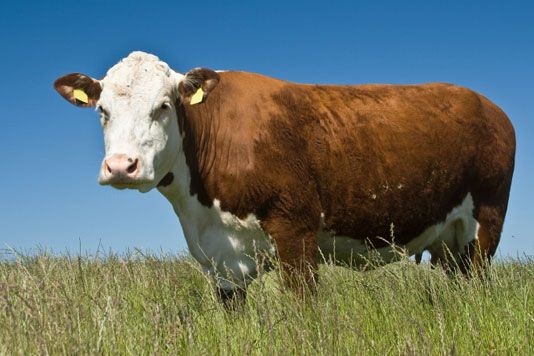Why we need to eat rare breeds

Keeping the tasty livestock of Britain alive, Nick Baines looks into preserving our nation's native breeds
Founded in 1973, The Rare Breeds Survival Trust is a charity dedicated to preserving native farm livestock here in the UK. Through conservation projects which include assisted breeding programmes, advice for livestock keepers and grants awarded to breed societies, the trust provides a support network that has saved many of our traditional British breeds of livestock from becoming extinct.
As well as monitoring the population of native breeds and taking action when necessary, the trust also maintains and develops a gene bank, which further protects against extinction.
Promoting rare breed meat
The RBST set up a marketing scheme to help promote rare breed meats, which in 2003 became the Traditional Breeds Meat Marketing Company, now independent of the Trust. The scheme, which is still growing today, helps to facilitate direct producer-to-butcher relations and ensures full traceability to each and every animal. “Pure bred and pedigree livestock can’t be farmed intensively. They are much more primitive and this is why they became rare.” Tells Richard Lutwyche, Managing Director of the TBMMC. “It’s a niche market, but the wonderful thing about these breeds is that it’s very easy to demonstrate the eating qualities to consumers.”
The flavour
Many traditional breeds of livestock have a more succulent and intense flavour, a reason many chefs hold native breeds so highly. “The product is always key and it’s much more interesting to work with rare breeds” says Jonray Sanchez-Iglesias of Bristol’s Michelin starred Casamia. “There can be inconsistencies and you might have to treat meat differently from one animal to the next, but it’s all worth it for the flavours they deliver.”
James Bodenham, Manager of Llandinabo Farm Shop, Ledbury, helps explain why. “Traditional breeds take longer to come to maturity and as such, carry a decent amount of flavourful fat. This fat helps to protect the exterior of the carcass, which means we can hang them longer than a continental breed and further intensify the meats flavour.”
Meat options
We have neglected many British breeds of sheep here in the UK. With the price of wool falling through the floor, we really do need to eat more lamb, hogget and mutton to facilitate these sheep being farmed. Even some of the breeds of pig you may be more familiar with are now in low numbers. Look out for Gloucester Old Spot, Berkshire, Tamworth and British Lop; a breed now on the vulnerable list. All make for tremendous eating and have their own traits, nuances and subtle differences. For beef, hunt down Traditional Hereford, Belted Galloway and the Lincoln Red.
Eat it to save it
So what can we, the consumers, do to help protect our traditional British breeds? Eat them. As strange as this sounds eating rare breed meat is a sure way of protecting them. As long as farming these breeds continues to be a viable option for farmers, the longer we’ll have these animals to enjoy and be proud of. Naturally, some rare breed meat may cost you slightly more, but you’ll feel satisfied with less of it. Safe in the knowledge that you’re helping conserve a part of our British food heritage and being rewarded with tastier, more succulent meat, surely it’s a price worth paying.
More meaty matters
Lucas Hollweg's cold rare roast beef with dill and mustard
Matt Tebbutt's Old spot cooked in milk, cinnamon, bay and lemon
Comments
Be the first to comment
Do you want to comment on this article? You need to be signed in for this feature